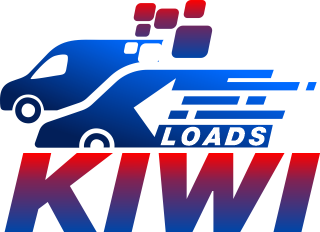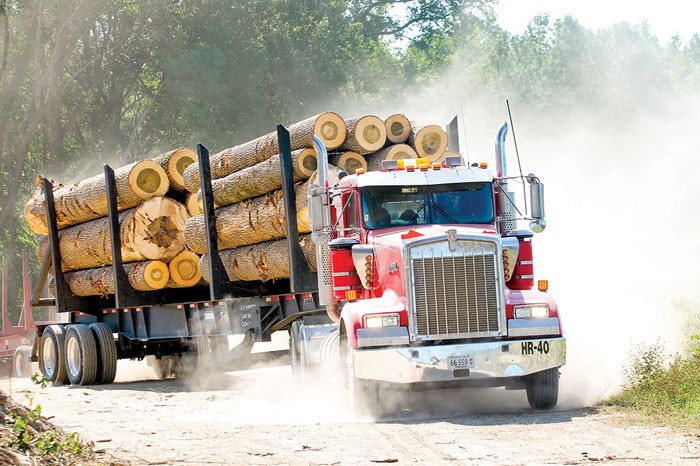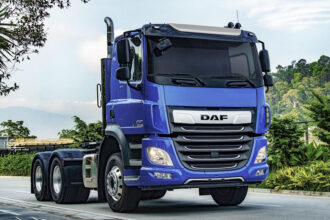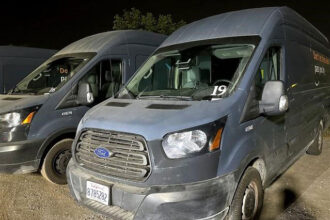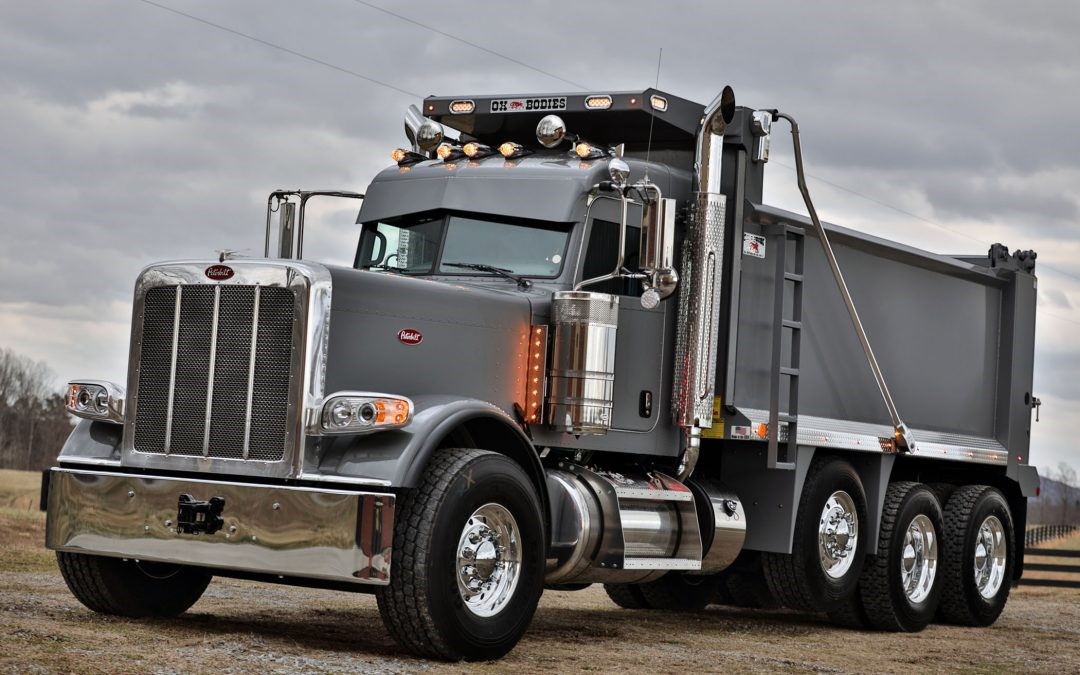Table of Contents
Introduction
Do you know that venturing into the world of logging truck business is an exciting journey that combines entrepreneurship with the rugged allure of the forestry industry? Your logging truck business will not only facilitate the movement of timber from the heart of the wilderness to the world of construction and manufacturing but will also present you with a host of challenges and opportunities. To ensure a successful foray into this business, explore the comprehensive checklist below as it will guide you through the essential steps of setting up and running a thriving logging truck business.
1. Market Research and Business Plan
Before you start a logging truck business, it’s important you conduct a thorough market research to understand the demand for timber transportation in your region. Identify potential competitors, assess pricing strategies, define your target customer base and determine the feasibility of your venture. Also, a well-crafted business plan will serve as your roadmap, outlining your goals, target market, marketing strategies, and financial projections.
- High demand for wood products
- Geographic flexibility for operations
- Potential for consistent revenue
- Strong partnership with sawmills
- High initial investment required
- Operational challenges that are weather-related
- Regulatory compliance complexity
- Seasonal fluctuations in demand
- Identify target markets such as logging companies, timber suppliers, and construction firms
- Research competitors services, pricing, and geographic coverage
- Define unique selling points such as efficient fleet, and eco-friendly practices
- Analyze market trends and demand for timber
- Set competitive rates and value-based pricing
- Calculate startup costs including trucks, equipment, permits, insurance, and staff
- Develop a marketing plan (online presence, industry events, and partnerships)
- Create financial projections such as revenue, expenses, break-even point, and profit margins
- Outline operational plan (fleet management, maintenance, driver hiring, and safety)
2. Legal and Regulatory Compliance
You’ll need to navigate various legalities and regulations, including obtaining the necessary permits and licenses for commercial trucking and logging operations. Register your business, secure liability insurance, and adhere to safety standards set by transportation and forestry authorities.
- Enhances business credibility
- Reduces legal risks
- Supports fair competition
- Averts fines and penalties
- Promotes ethical business practices
- Increases operational costs
- Limits flexibility or rapid expansion
- Needs expert legal knowledge
- Involves complex documentation
- Obtain necessary permits for commercial vehicle operation
- Adhere to federal weight and size regulations for trucks
- Register vehicles with the Department of Transportation (DOT)
- Follow hours-of-service rules for truck drivers’ working hours
- Comply with environmental regulations for disposal, spills and emissions from vehicles and chainsaws
- Ensure driver licenses and qualifications meet federal standards
- Maintain accurate logbooks of driving hours and activities
- Abide by state-specific regulations for hauling timber
- Implement safety measures outlined by the Federal Motor Carrier Safety Administration (FMCSA)
>>>MORE: Is Logging Truck Good Business?
3. Fleet Acquisition

Acquire a fleet of sturdy logging trucks capable of hauling heavy timber loads over challenging terrain. You assess your current needs and growth projections, then research truck models and financing options. Next, you negotiate with dealerships or sellers, considering factors like reliability, fuel efficiency, maintenance costs, and load capacity.
- Enhanced operational efficiency
- Increased hauling capacity
- Improved transportation logistics
- Wider market reach
- Competitive edge in industry
- High initial investment required
- Maintenance complexity and costs
- Regulatory compliance challenges
- Environmental impact concerns
- Experienced driver shortage
- Gradual depreciation affects asset value
- Overhead expenses may rise
- Define fleet size and truck types
- Create a budget and financing plan
- Contact truck manufacturers and dealers
- Compare quotes and negotiate prices
- Secure financing or lease agreements
- Take note of loan terms and interests
- Register and insure the trucks to mitigate potential risks
- Hire trained drivers and staff
- Set up maintenance and repair schedule
- Launch operations and monitor performance
4. Preventive Maintenance Program
Maintaining the longevity and dependability of your logging truck business’s fleet requires diligent attention. Safety of your drivers, cargo, and equipment hinges on routine maintenance and inspections. Cultivate partnerships with trustworthy mechanics and service trucks regularly to manage wear and tear.
- Efficient operations and minimal downtime
- Preventive care saves cost
- Enhanced driver and public safety
- Prolonged truck lifespan
- Regulatory compliance assurance
- Reduced fuel consumption
- Higher truck resale value
- Time-consuming maintenance routines
- Disrupted logging schedules
- Complex scheduling management
- High dependence on skilled technicians
- Inspect and maintain truck engines and systems
- Clean and lubricate moving parts to reduce wear
- Replace worn-out parts promptly for optimal performance
- Monitor tire pressure and condition to prevent blowouts
- Keep brakes in top condition to ensure safe stops
- Check and maintain transmission and fluid levels consistently
- Inspect electrical systems to avoid breakdowns on routes
- Follow manufacturer guidelines for scheduled maintenance tasks
- Address any minor issue before it escalates into major problems
- Train drivers to report and address potential issues
5. Experienced Drivers and Staff
Assemble a skilled team of drivers with experience in handling logging trucks and timber transportation. Thoroughly vet each driver’s qualifications, driving records, and understanding of safety protocols. You should also hire competent office staff to manage scheduling, paperwork, and customer communications as it is equally crucial.
(Drivers)
- Skilled maneuvering when driving tough terrains
- Efficient deliveries and optimal routes
- Safety-conscious practices and reduced accidents
- Beneficial mentorship for new drivers
- Resourceful in mechanical challenges
(Staff)
- Swiftly troubleshoot machinery issues
- Higher productivity due to training expertise and skill
- Improved business operations
- Effective record-keeping
(Drivers)
- Higher salary expectations
- Severe exhaustion or burnouts from long hours
- Reliance on outdated practices
(Staff)
- Inflexible work methods
- Resistance to updated regulations
- Define criteria: qualifications, skills, and experience required
- Conduct interviews and assess experience, skills, and suitability
- Administer driving tests to evaluate driver’s truck handling skills
- Provide training on procedures, equipment, and safety protocols
- Verify commercial driver’s licenses and certifications
- Orient new hires on safety policies and emergency procedures
- Monitor performance, adherence to safety standards, and interactions with customers
6. Safety Protocols
To ensure the utmost safety in your logging and truck operations, it’s essential you implement rigorous safety protocols for your drivers, equipment, and the environment. This involves meticulous load securement, comprehensive driver training, strict adherence to road safety regulations, and the utilization of suitable safety gear.
- Enhanced road safety measures
- Reduced accident risks
- Consistent operational guidelines
- Efficient load securing methods
- Increased emergency response readiness
- Potential operational slowdowns
- Initial implementation costs
- Compliance enforcement challenges
- Possible workflow disruptions
- Inspect trucks daily for mechanical issues and damage
- Train drivers in safe loading and securing practices
- Maintain speed limits and follow traffic rules strictly
- Use reflective signs and lights for high visibility
- Monitor weather conditions to avoid unsafe driving environments
- Ensure you service brakes, tires, and steering systems regularly
- Implement drug and alcohol testing for drivers
- Encourage seatbelt use and enforce strict no-phone policy
- Provide fire extinguishers and emergency kits in trucks
7. Efficient Route Planning
Develop efficient logging trucks transportation routes that minimize travel time while considering road conditions, weight restrictions, and environmental impact. You should also ensure that your drivers are equipped with up-to-date maps, GPS systems, and real-time traffic information.
- Reduced cost and fuel consumption
- Increased delivery speed and productivity
- Enhanced drivers’ satisfaction and retention
- Minimal environmental footprint and emissions
- Initial route setup complexity
- Limited route flexibility and spontaneity
- Possible navigation errors and detours
- Analyze load distribution for optimal weight balance
- Use GPS apps for real-time traffic updates
- Plan routes during off-peak hours to avoid congestion
- Consider road restrictions for large vehicles like trucks
- Utilize route optimization software for cost-effective paths
- Prioritize main highways and well-maintained roads
- Stay updated on weather conditions and potential roadblocks
- Maintain open communication with drivers for route adjustments
>>>PRO TIPS: How to Start a Logging Truck Business
8. Proper Loading Technique
Proper loading technique is crucial for safety and efficiency in logging truck business. You must ensure that the logs are evenly distributed and securely fastened. Also, you need to follow guidelines for weight limits and stacking heights. Prioritize balance and stability to prevent accidents during transport.
- Efficient unloading process
- Compliance with regulations
- Lower maintenance costs
- Minimal legal complications
- Reduced wear and tear
- Time-intensive loading procedures
- High dependence on skilled loaders
- Limited cargo volume capacity
- Position the logs evenly along the trailer bed
- Secure each log using appropriate chains and binders
- Distribute the weight evenly to maintain balance
- Place the heaviest logs at the bottom layer
- Align logs parallel to the trailer’s length
- Create a secure boundary with stakes and bolsters
- Double-check all connections for tightness and stability
- Avoid overloading to prevent damage and accidents
- Inspect the logs and fastenings during transit
- Adhere to industry standards and regulations
9. Supplier and Customer Relationships
Establish strong relationships with both timber suppliers and customers who require your logging truck services. You should also note that reliable suppliers will ensure a steady stream of timber, while satisfied customers will contribute to your business’s reputation and growth.
- Reliable timber supply ensures stability
- Firm loyalty fosters mutual support
- Efficient coordination enhances deliveries
- Limited communication or breakdown disrupts processes
- Competitive risks in information sharing
- Foster trust through transparent communication
- Offer fair prices for logging truck services
- Understand customer needs and tailor services accordingly
- Maintain open channels for feedback and improvement
- Invest in technology for efficient order tracking and management
10. Financial Management
Keep a close eye on the financial health of your logging truck business by maintaining accurate records, tracking expenses, and monitoring cash flow. Ensure that your pricing strategy covers operational costs and provides room for profit.
- Efficient cost optimization
- Strategic capital investment
- Accurate revenue tracking
- Enhanced risk resilience
- Maintenance cost variability
- Economic downturn susceptibility
- Monitor expenses, revenue, and profit margins
- Allocate funds for maintenance, upgrades, and expansion
- Utilize tax incentives to minimize liabilities
- Optimize cash flow for operational stability
- Manage debt and maintain good credit
- Plan for economic fluctuations and emergencies
Overview of Logging Truck Business
Launching a logging truck business demands you plan meticulously, adhere to regulations, and practice safety measures. By following the above checklist, you’ll set a solid foundation for your venture and navigate the challenges and rewards that come with being a part of the forestry and transportation industries.
>>>GET SMARTER: Logging Truck Business Plan: How to Implement a Profitable One
How to Start a Logging Truck Business
To start a logging truck business, utilize these steps:
- Research local logging industry regulations
- Develop a detailed business plan
- Secure necessary funding or loans
- Purchase reliable logging trucks and equipment
- Obtain required permits and licenses
- Hire skilled and experienced truck drivers
- Advertise services to potential clients
- Maintain strict safety and maintenance protocols
Pros & Cons of Logging Truck Business
Pros
- Contributes to the timber industry’s growth
- Facilitates efficient transport of logs
- Supports construction and manufacturing sectors
- Offers potential for expansion and growth
- Fosters partnerships within the supply chain
Cons
- Generates environmental concerns due to deforestation
- Poses risks of accidents and road congestion
- Requires significant initial investment
- Encounters regulatory challenges for safety and emissions
What to Watch Out For
Watch out for the following while you manage your logging truck business:
- Shortage of skilled drivers
- Unforeseen maintenance costs
- High fuel expenses
- Stringent regulations that complicate operations
- Competitive market pressures
Pro Tips
Take note of these key pro tips for a successful logging truck business:
- Adhere to safety regulations
- Comply with log transportation rules
- Manage driver hours carefully
Recap
When operating a logging truck business, you manage the transportation of logs from forests to processing facilities. You coordinate routes, handle permits, ensure safety, and maintain trucks for optimal performance. Your success depends on efficient logistics and adherence to industry regulations.
